Here are 10 common workout mistakes that overweight women wanting to lose weight often make.
Though nobody likes to hear, “You’re doing this the wrong way,” there’s an upside to this: Doing something correctly can be achieved in an instant.
This is a far better scenario than to be told, “You’re genetically hardwired to have a body weight in the obese category.”
Before you blame genetics or “big bones” or think you must force yourself to embrace having to wear XXL clothing, ask yourself if you’re making any of the following 10 workout mistakes. These blunders will sabotage your goal of slimming down.
But even if weight loss isn’t your chief goal, these errors will interfere with other fitness-related goals as well.
#1. Spending too Much Time Doing Ab Exercises

Shutterstock/Pises Tungittipokai
If you want to lose a chunky stomach, you need to create a job opening for all its stored fuel (fat).
Working the tiny muscles of the midsection won’t create this opening.
Only when you hit the large muscle groups (butt, legs, back, chest) will your body go into an energy deficit, for which stored body fat will be used for recovery.
#2. Going Through the Motions with the Weights
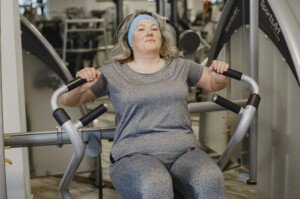
Pexels/Gustavo Fring
You may already be doing the best fat-burning exercises with weights – as far as the specific exercise – but if the resistance is too light, you won’t create that energy deficit, nor will you add enough lean muscle to perk up your resting metabolism.
#3. Too Much Time on Cardio Machines, not Enough Strength Training

Increase the time you spend strength training by 50%, and reduce the time you spend doing any form of aerobics by 50%, and see what happens.
This approach assumes that you’ve already been devoting most of your exercise time to cardio machines.
Certainly, if all you’ve been doing is 90 minutes a week of cardio, you’ll want to keep doing this, and even add on some time.
But many overweight women spend four or five hours a week on cardio equipment, and barely touch any barbells, dumbbells or resistance machines.
#4. Thinking Long Slow Cardio will Get the Job Done
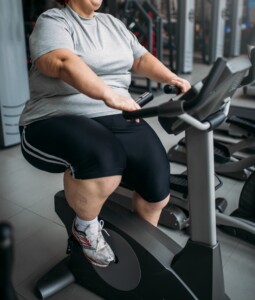
Shutterstock/Nomad_Soul
Long duration aerobics is inferior to high intensity interval training – on every level – including fat loss, improvement of cardiovascular health, a boosted immune system, increased energy and saving time.
Don’t let the words “high intensity” scare you away. HIIT can be done on a stationary bike or elliptical trainer.
Though you may spot a young muscled man doing what appears to be HIIT on a treadmill – alternating brief sprints with slow jogging or walking – this doesn’t mean that an obese woman can’t effectively perform HIIT.
HIIT should be done twice a week, and you can do long slow cardio once a week. Learn more about HIIT.
#5. Hugging the Revolving Stair Case Rails
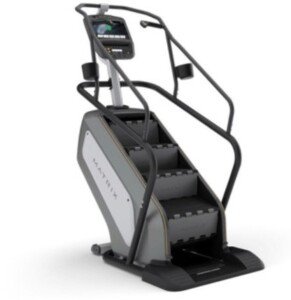
If it’s too hard to let go, then set the speed slower. Step upright, like you would on a real staircase.
This will improve balance, engage more muscles including the core and ultimately burn more fat.
You may have to use level 2 or even 1 in order to sustain a climb without holding on.
Humble yourself and don’t get caught up with the level number. Find the level you can work with.
There is nothing wrong with moving very slowly on this machine.
If you’re not clinging to the rails, you’re getting a true workout, unlike others who at faster levels hold on and lean way into the machine with their butts sticking out.
#6. Avoiding Certain Exercises Because You Think They’ll Bulk You Up

hutterstock/Nomad_Soul
The very exercises you think might bulk you up are the very exercises that are great fat burners, such as the following.
• Squat
• Deadlift
• Leg press
• Flat or incline bench press
• Incline dumbbell press
• Seated row
• Lat pull-down
• Standing overhead barbell press
• Seated overhead dumbbell press
Barbells don’t bulk up women; bon bons do. Dumbbells don’t bulk up women; donuts do. Weightlifting doesn’t bulk up women; waffles do.
Women whom you see at the gym, who have more muscles than you’d want visible on your own body, train deliberately for that result. It’s hard, committed training for that specific goal.
A woman will not become “too muscular” by accident.
#7. Not Lifting Heavy Enough

Shutterstock/Halfpoint
Why are you still using 10 pound dumbbells for your seated overhead press when you’ve been doing this for months?
Progressive resistance (using heavier weight loads over time) increases LEAN muscle mass – which leads to a faster resting metabolism and a smaller-looking body relative to its weight.
This is why the “after” photos of some women, who’ve employed progressive resistance, look leaner than the “before” images, even though the “after” body weight is the same or even heavier!
#8. Not Pushing Hard Enough
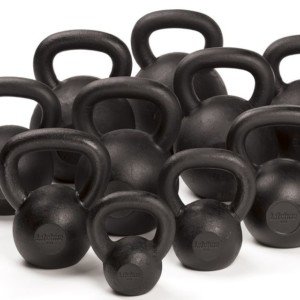
There’s a smear campaign out there, headed by so-called body positive influencers.
It’s a crusade against tough workouts. They think all you need to do is dance around in your living room or take Fluffy on walks for your exercise.
They rally against hard, scheduled work. They condemn sweat. They denounce breathing quickly and deeply.
Chuck those admonitions. Among the best things for the human body is intense exercise — even if you don’t want to lose weight.
But pushing hard through tough workouts will help expedite fat loss.
Hard work in a gym – be it a standard gym or home environment – is NOT a sign of obsession, poor body image or not loving yourself enough.
However, you need to be very mindful of proper form, safe movements, getting enough water and allowing your muscles to recover in between workouts. Listen to your body. Never try to “work through” a painful joint.
#9. Skipping Gym Workouts Because You Think Housework Is a Substitute

Freepik.com
Never do this. I can write a book on this, but just trust me, there’s a reason why the “housework-only” body looks a lot different than the “women on weights” body.
Housework should be done when it needs to be, and should be regarded as strictly that: housework. Nothing more.
No matter how much housework you did in a particular day, you still have a slot open for structured exercise that’s applied equally to both sides of the body.
#10. Getting Offended when a Personal Trainer Approaches You with Advice
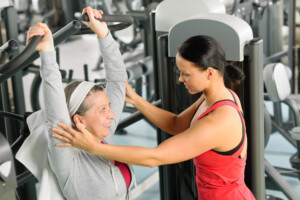
Shutterstock/CandyBox Images
Don’t be a schmuck. Yes, it’s certainly possible that the trainer is hoping to get you as a new client – and if that’s the case, you can still get free advice!
Let him or her do their explaining. You might be quite surprised at what you’ll hear.
At the same time, there’s nothing wrong with also politely telling them you’re not interested in personal training, but that you’d still welcome some advice.
A dedicated personal trainer enjoys what they do. They will enjoy giving advice, even to gym members who aren’t interested in hiring a trainer.
I’d approach gym patrons whom I already knew would never hire a personal trainer (sometimes, you can just tell whom these are) and start a conversation about what they were doing. I enjoyed explaining many things – even though I knew they’d never purchase a training package.
Just listen to the trainer. After all, you could be doing something incorrectly or not efficiently – which would explain why the weight hasn’t come off or why you keep having pain in a joint.
 Lorra Garrick is a former personal trainer certified by the American Council on Exercise. At Bally Total Fitness she trained clients of all ages for fat loss, muscle building, fitness and improved health.
Lorra Garrick is a former personal trainer certified by the American Council on Exercise. At Bally Total Fitness she trained clients of all ages for fat loss, muscle building, fitness and improved health.
.



























